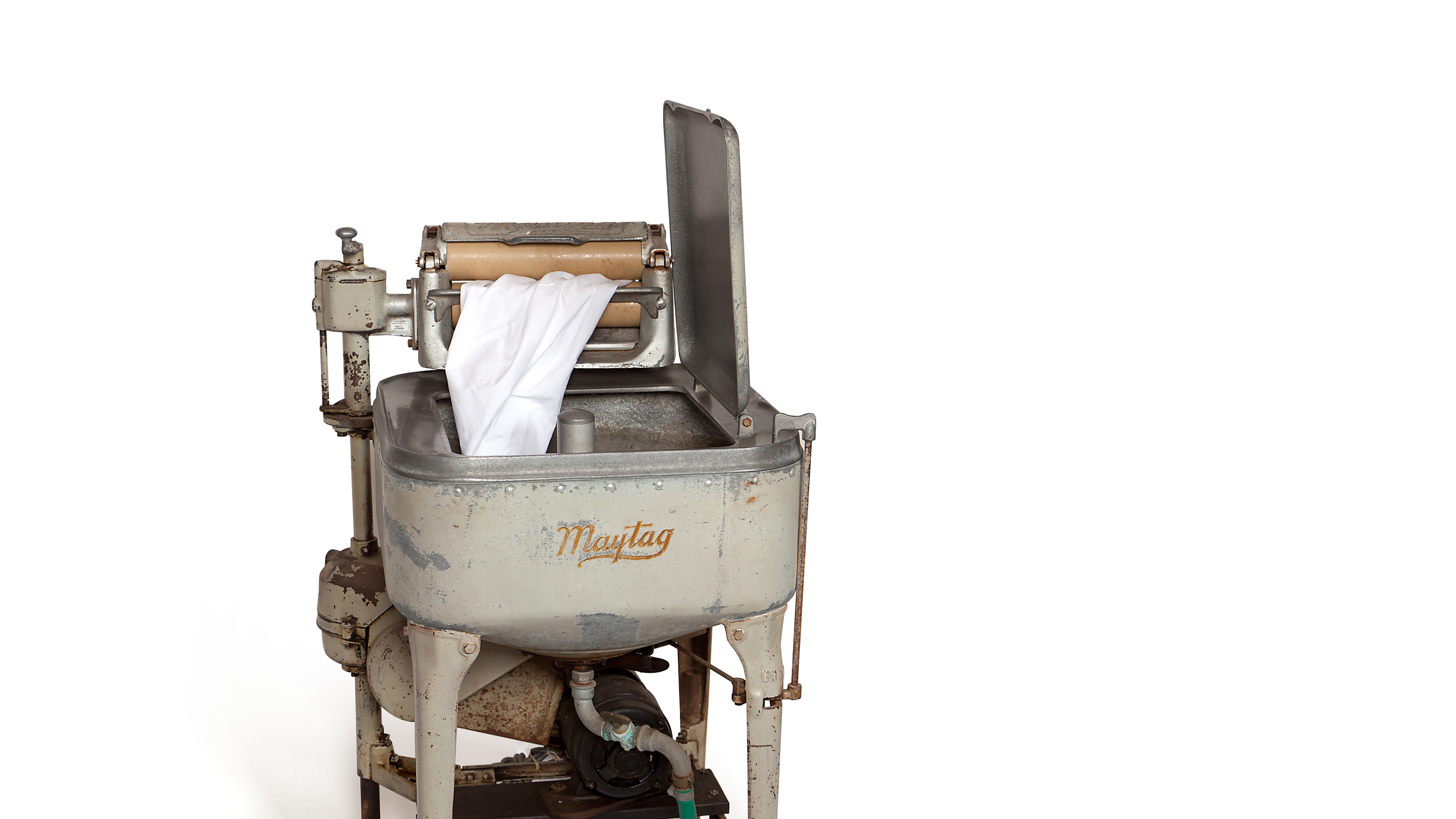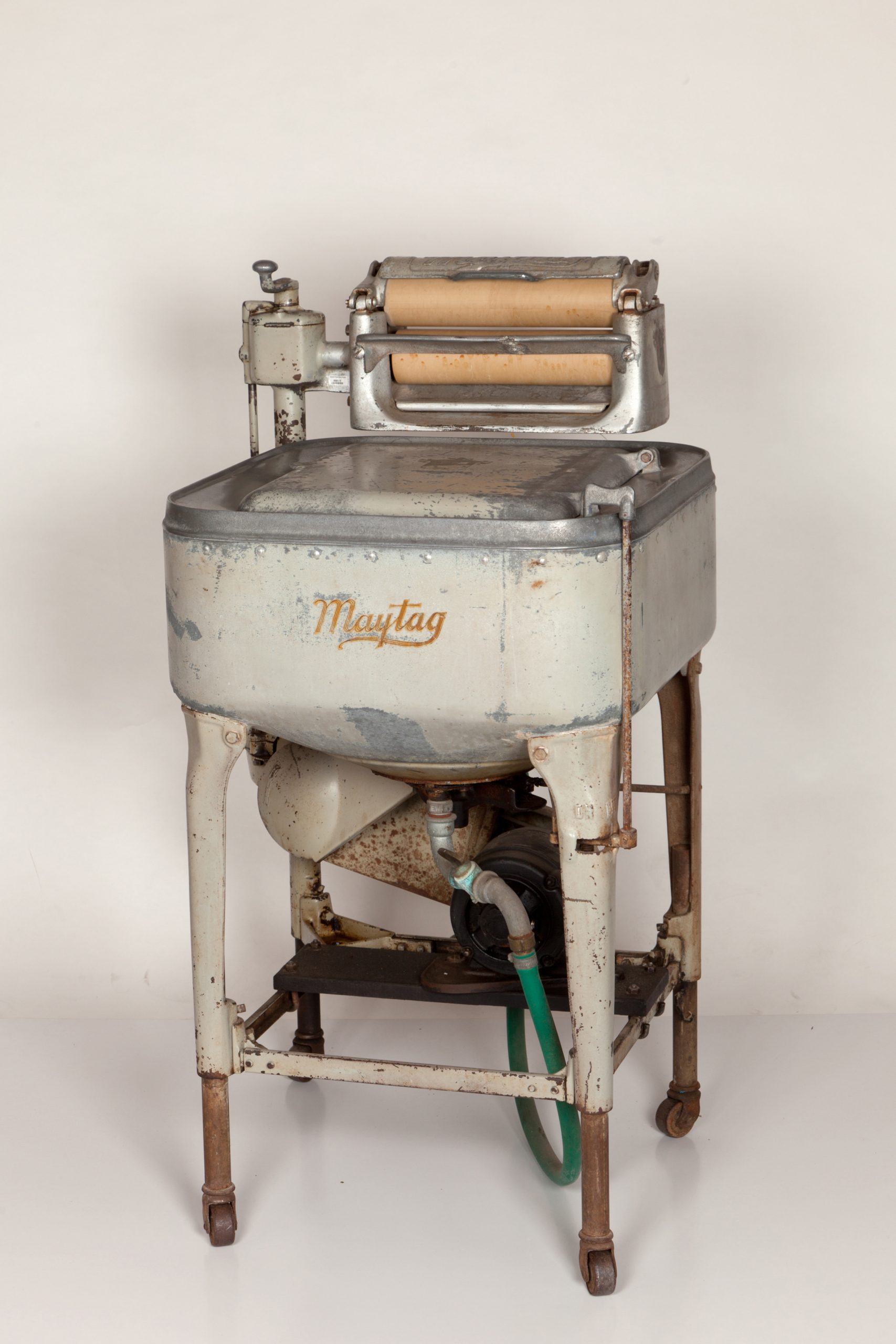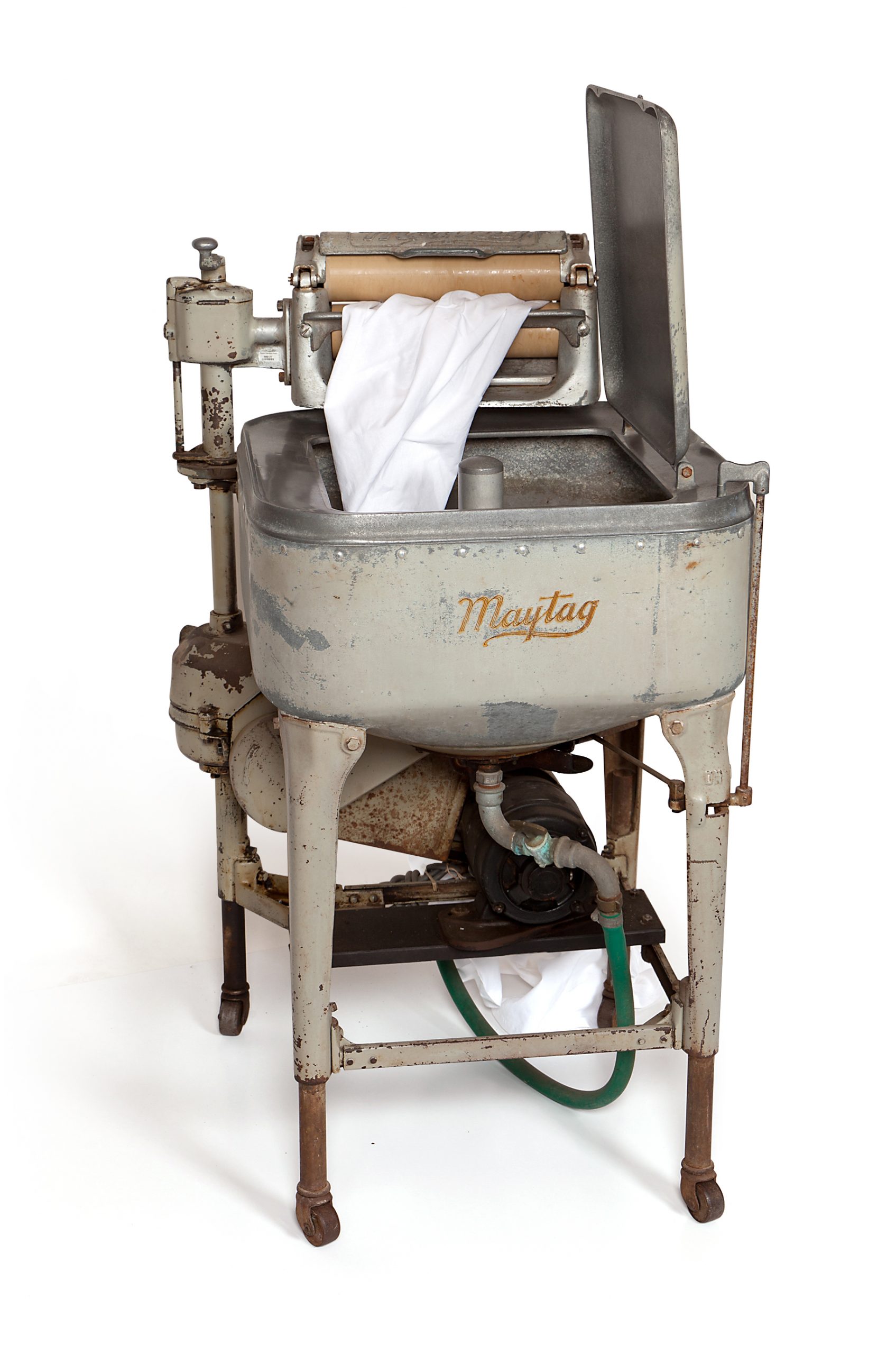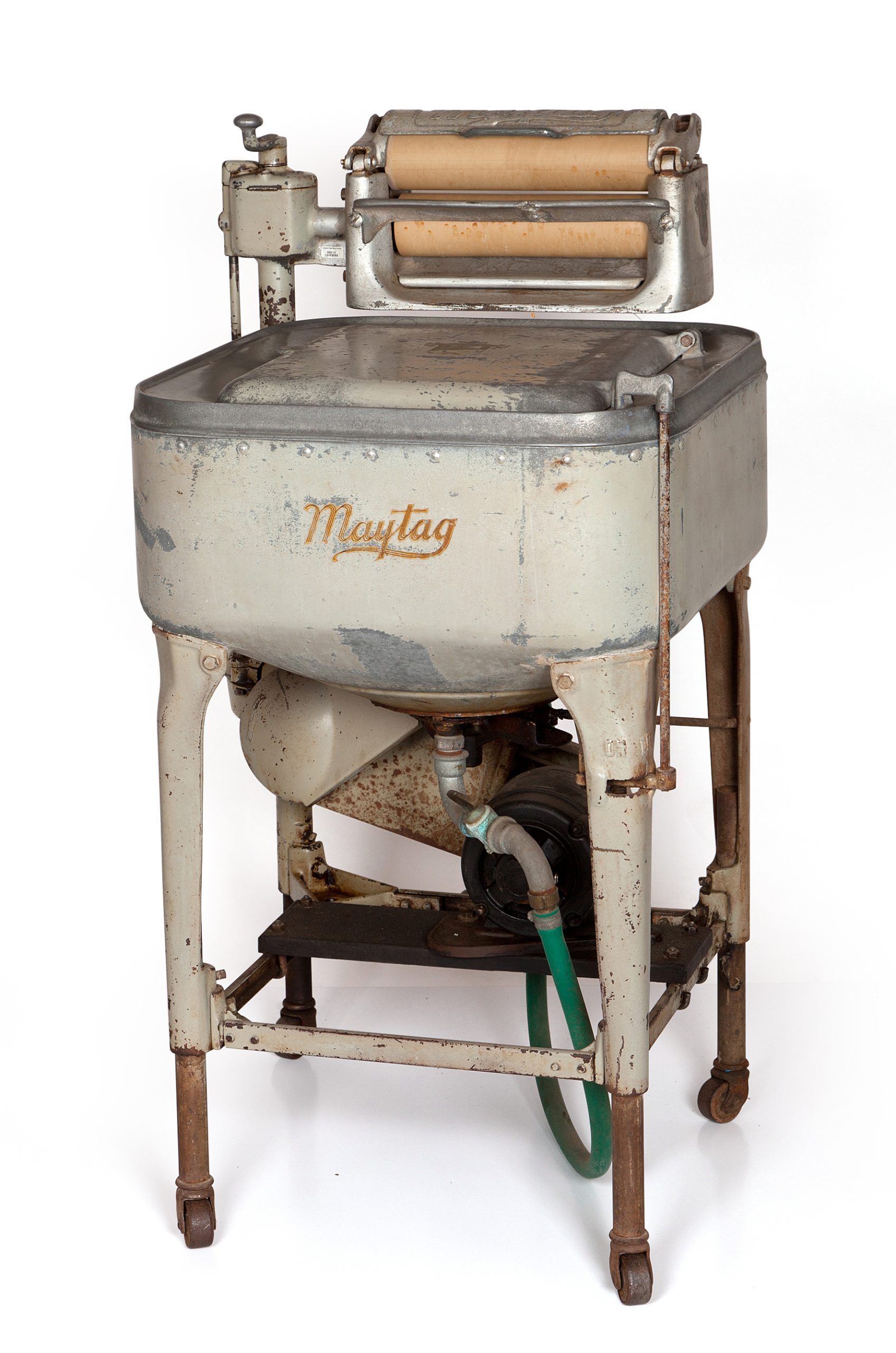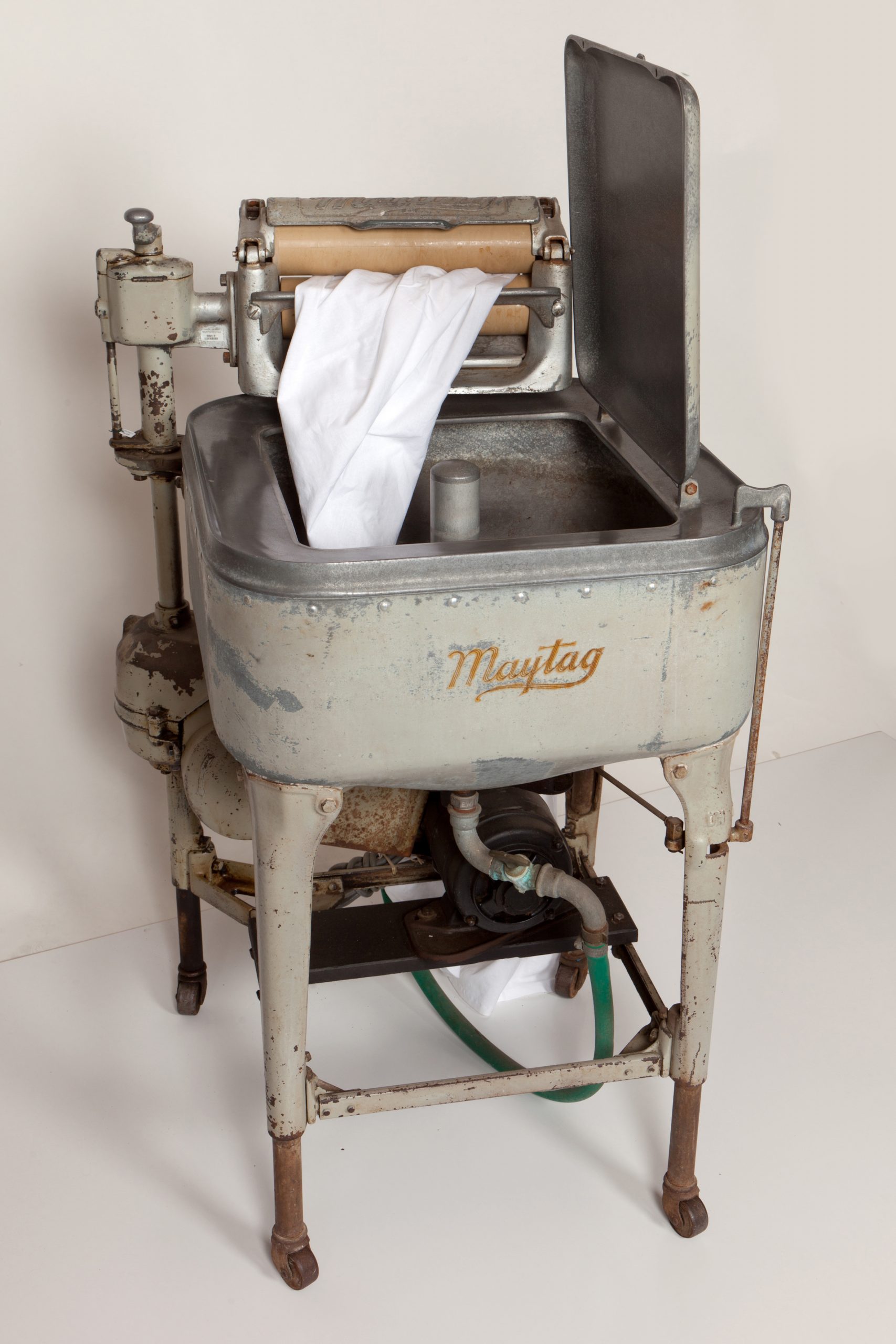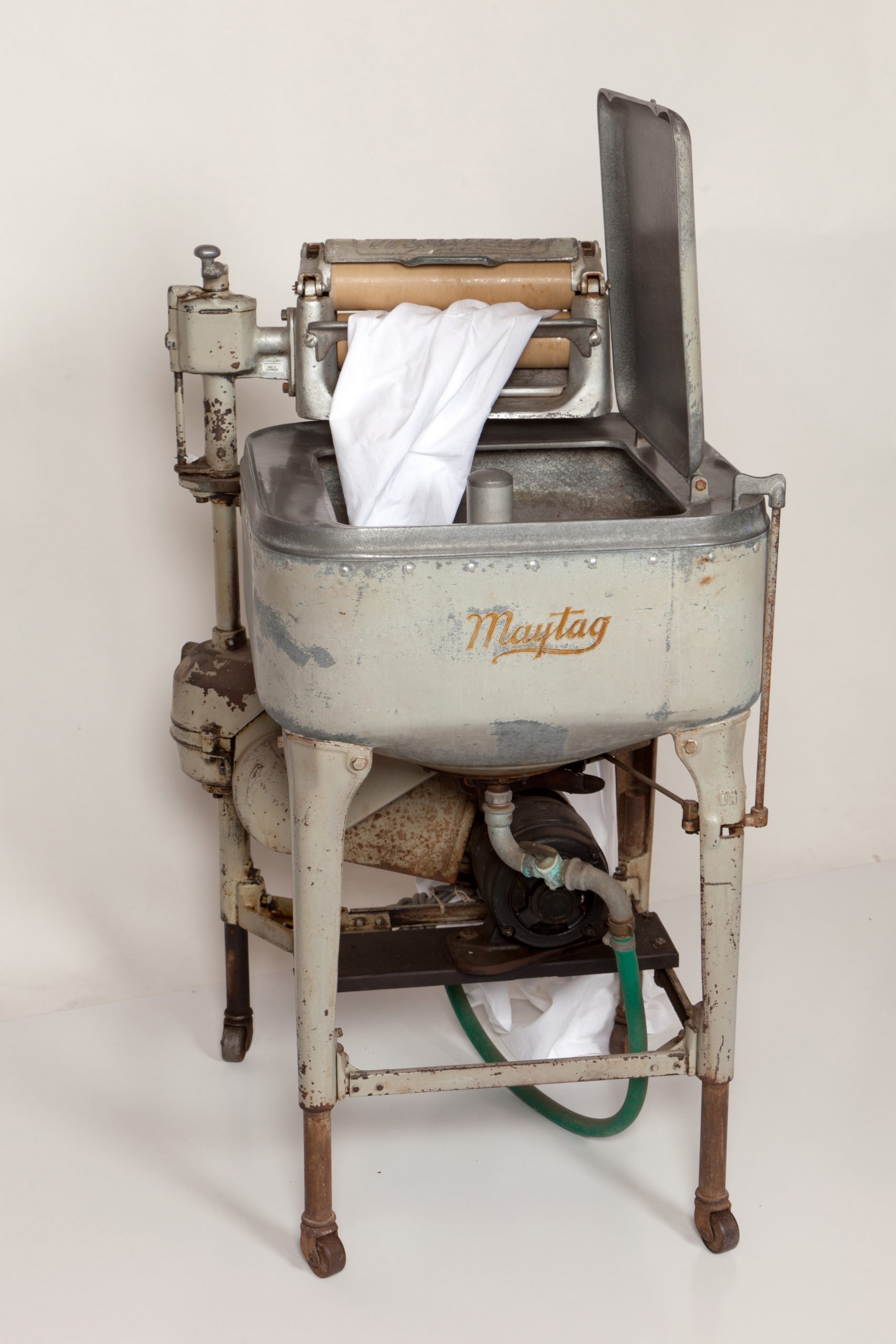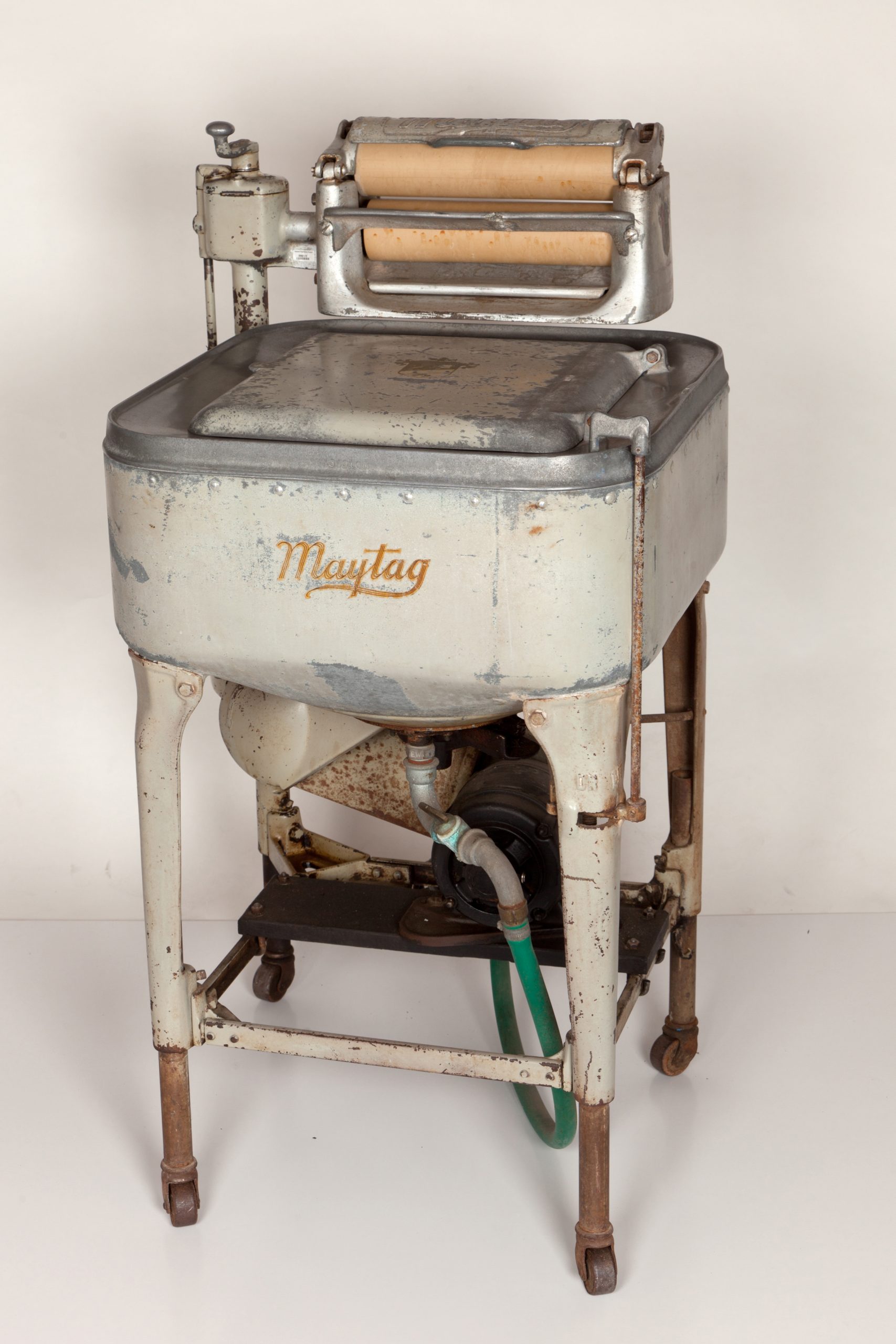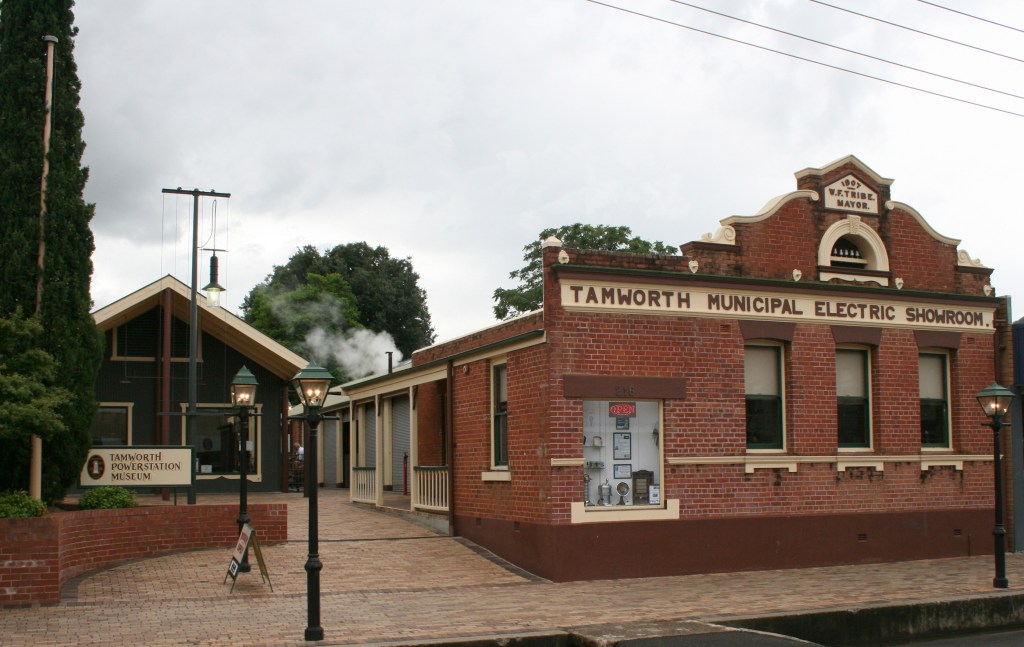Daily Drudgery Gone?
The Promise Behind the Maytag Washing Machine
The introduction of electricity into the home created a boom in labour saving devices. From the start of the twentieth century, these devices were marketed strongly towards women, who did the majority of work in the home.
Electric washing machines, like the machine shown here, along with vacuums, hair dryers and clothing irons all entered the market. Women were tantalised to think their home lives would be free from the drudgery of housework, but so they could better care for their husbands and families.
This 1929 Maytag washing machine though, did make wash day easier. It was claimed to use less water and wash 50lbs (23kgs) of washing in an hour. This was achieved by allowing a fresh load to be washed while the previous load was being put through the wringer mounted on top of the machine.
Purchased new in 1929 and installed for Mrs Eliza Morris in her boarding house at 90 Carthage Street, Tamworth, this machine washed all of the guest’s linen and towels. This particular model was made from cast aluminum with a small electric motor that powered both the agitator that spun the clothes back and forth, and the clothes wringer mounted on top of the machine. If electricity was a problem, there was also a petrol-powered model.
Washing the guest’s linen with this machine might have saved some effort but for Eliza Morris, her daughter Lorna Pepper, and niece Elizabeth Cork it was still a very hands-on chore. Having loaded the tub with the washing, once clean, the women would then lift the heavy water-logged material out of the wash tub and feed it through the wringer to squeeze out some of the water before the sheets were hung out to dry.
The machine worked solidly for 59 years, handed down from mother to daughter and then niece before it was retired in 1988.


